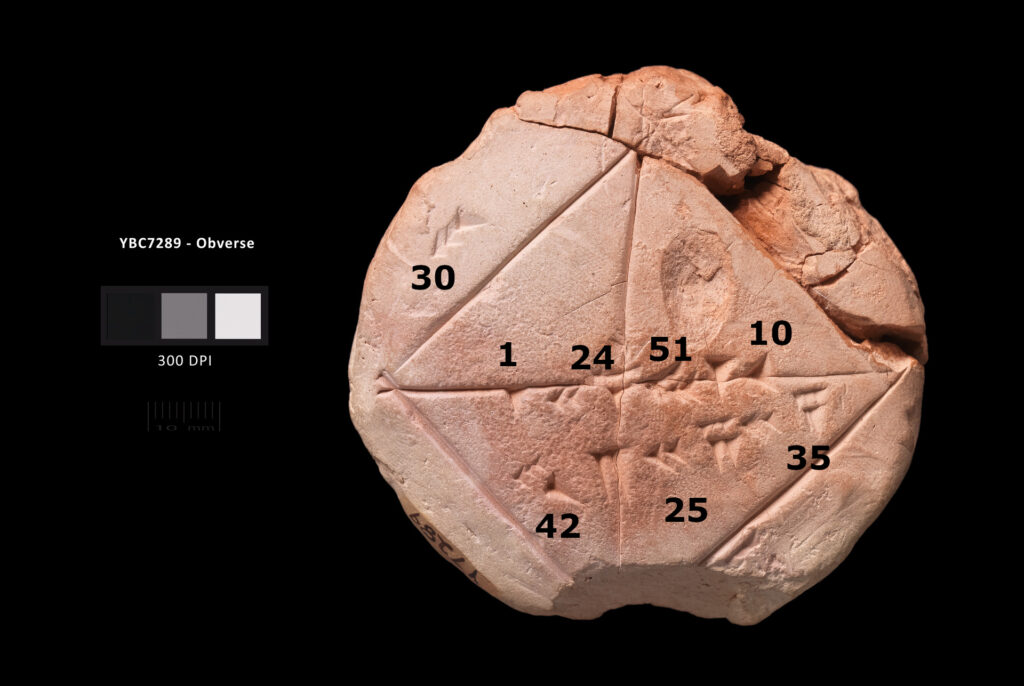A Geometric Progression(G.P.) is a sequence in which each term is derived by multiplying or dividing the preceding term by a fixed number or a constant ratio(r).
E.g. 2, 4, 8, 16, 32, 64, … here the 1st term is 2, and the common ratio is 2. We can get consecutive terms by multiplying the number with 2. So the next term after 64 will be 128.
We can use the notion to get an arbitrary term, a finite or infinite sum of the series, and apply them in multiple contexts, including some complex problems.
Index
History
A clay tablet from the Early Dynastic Period in Mesopotamia, MS 3047, contains a geometric progression with base 3 and multiplier 1/2. It has been suggested to be Sumerian, from the city of Shuruppak.
It is the only known record of a geometric progression from before the time of Babylonian mathematics.

According to Boethius (510), arithmetic and geometric sequences were known to early Greek writers.
The infinite series had originated in India by the 14th century. An explicit formula for the sum of an infinite (Anantya) geometric series is given by Nilkantha in his Aryabhatyabhasya around 15th-16th century.
Geometric Sequence
A sequence is said to be a geometric progression or G.P. if the ratio of any term to its preceding term is the same throughout the sequence.
Usually, we denote the first term of a G.P. by a and its common ratio by r. The general or the \(n^{th}\) term of G.P. is given by
\(l = ar^{n – 1}\).
Here,
a is the 1st term
r is the common ratio
n is the number of the term.
l is the last term
So a Geometric sequence will be \(a, a_1, a_2, a_3, a_4, … , l\)
Here,
\(a\) is the first term
\(a_1\) is the second term and be given as \(a_1 = ar\)
\(a_2\) is the third term can be given as \(a_2 = a_1r = ar^2\)
And so on…
The sequence can also be written \(a, ar, ar^{2}, ar^{3}, ar^{4}, … , ar^{n-1}\)
Sum of a Geometric Progression
Let the first term of a G.P, be ‘a’, common ratio ‘r’ and ‘\(S_n\)’ denote the sum of first ‘n’ terms.
Case 1: Let r = 1 and n is finite
Therefore, \(S_n = a + a + a +… + a = an\)
Case 2: Let \(r \neq 1\) and n is finite
Therefore, \(S_n = a + ar + ar^2 + ar^3 + … + ar^{n-1}\)
Now multiplying the equation with ‘r’ we get,
=> \(rS_n = ar + ar^2 + ar^3 + ar^4 + … + ar^{n} …(ii)\)
Subtracting (ii) from (i), we get
=> \(S_n(1-r) = a(1 – r^n)\)
=> \(S_n = \frac{a( 1- r^n)}{(1 – r)} \mbox{ (when r<1) (OR) } S_n = \frac{a( r^n – 1)}{(r – 1)} \mbox{ (when r>1) } \)
Geometric Mean(G.M.)
Geometric Mean of any two numbers x & y (where ‘x’ is the first term and ‘y’ is the last term) can be get using the formula,
G.M. = \(\sqrt{xy}\)
This the generalized formula for the G.M.
Sum of Infinite Geometric Progression
There is another type of geometric series, an infinite geometric series. An infinite geometric series is the sum of an infinite geometric sequence and can be given by the formula,
\(S_{\infty} = \frac{a}{(1 – r)}\)(We can find the sum of an infinite geometric sequence only when \( 0 < r < 1\))
This is because as ‘n’ reaches infinity \(r^n\) approaches Zero.
Geometric Progression Questions
Question 1. The common ratio of a G.P. is 3, and the last term is 486. If the sum of these terms is 728, find the first term.
Solution.
Let a be the 1st term
\(r = 3 \mbox{ and } a_n = ar^{n-1}\\
486 = \frac{a3^{n}}{3}\\
1458 = a3^n …(1)\\
S_n = \frac{a( 1- r^n)}{(1 – r)}\\
728 = \frac{a(3^n – 1)}{2}\\
1456 = a3^n – a …(2)\\
\mbox{Subtracting (2) from (1), we get}\\
1458 – 1456 = a.3^n – a.3^n + a\\
2 = a\\
\)
Therefore, the first term, a = 2.
Question 2. Prove that: \(9^{\frac{1}{3}}. 9^{\frac{1}{9}} . 9^{\frac{1}{27}} ….\infty = 3\).
Solution.
LHS
\(9^{\frac{1}{3}} . 9^{\frac{1}{9}} . 9^{\frac{1}{27}} ….\infty \\
\mbox{(OR)}\\
9^{\frac{1}{3} + \frac{1}{9} + \frac{1}{27} +….\infty }\\
\mbox{Let } x = \frac{1}{3} + \frac{1}{9} + \frac{1}{27} +….\infty\\
\mbox{If we see carefully we can spot a Geometric Sequence, with}\\
a = \frac{1}{3}\\
r = \frac{\frac{1}{9} }{\frac{1}{3}}\\
r = \frac{1}{3}.\\
S_{\infty} = \frac{a}{1 – r}\\
S_{\infty} = \frac{ \frac{1}{3}}{ (1 – \frac{1}{3}) }\\
S_{\infty} = \frac{1}{2}\\
\)
Therefore, \(9^x = 9^{\frac{1}{2}}\) = 3 = RHS
Hence proved.
FAQs
Geometric Progression is a series of numbers in which each number is multiplied or divided by a fixed number to produce the next, for example, 1, 3, 9, 27, 81…
The expression “geometric progression” comes from the “geometric mean” (Euclidean notion) of segments of length a and b: it is the length of the side c of a square whose area is equal to the area of the rectangle of sides a and b.
There is a pattern in the sequence. If the sequence has a common difference, it’s arithmetic. If it’s got a common ratio, it’s geometric.
Geometric mean is given by formula \(\sqrt{ab}\)
Therefore, the G.M. = \(\sqrt{2*32}\) = 8.
